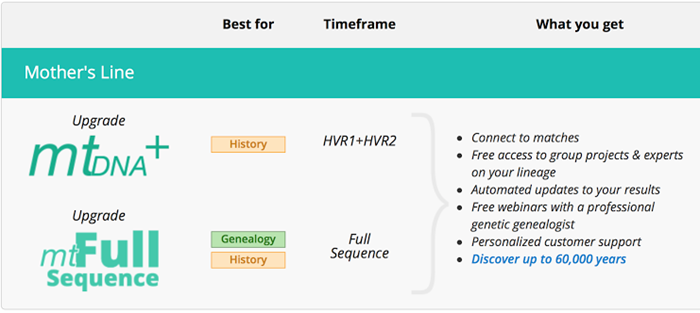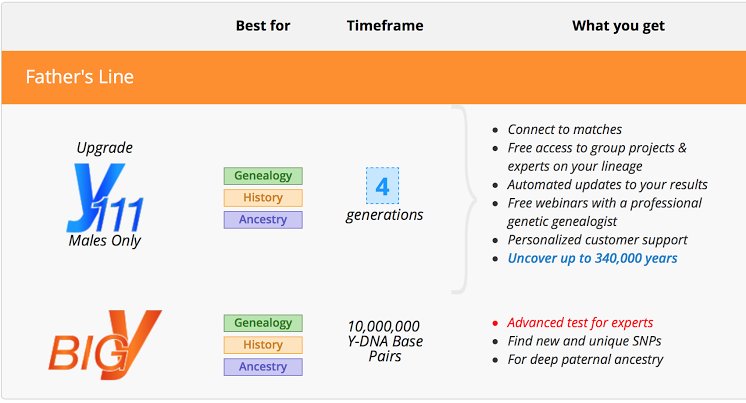by Lisa Cooke | Jul 17, 2015 | 01 What's New, British, Digital Archives, Findmypast, images, Newspaper

Every Friday, we blog about new genealogy records online. Do any collections below relate to your family history? Please share with genealogy buddies or societies that might be interested! This week: Midwestern U.S. newspapers (Cleveland, OH and Chicago, IL) and records of Pennsylvania coal and canal workers’ and English and Welsh criminals.
CLEVELAND JEWISH NEWS. Technically this isn’t new content, but access to the Cleveland Jewish News is newly free, so it’s new to most of us! You do need to provide your name and email address for free access to 125 years of Cleveland Jewish newspapers. Subscribers have immediate access to all content as it is published; the public can access materials 90 days after they go online.
CHICAGO TRIBUNE ARCHIVE. For a very limited time–during beta testing of its new archive–old issues of The Chicago Tribune are free to search on its Archives website. Click here for their FAQ page or read a more detailed report on the National Genealogical Society (US) blog.
ENGLAND & WALES REGISTER OF CRIMINAL PETITIONS. Findmypast added over 77,000 records to its Registers of Criminal Petitions index to imaged registers of correspondence relating to criminal petitions. Documents usually give the outcome of any appeal and registers note the place of imprisonment.
PENNSYLVANIA COAL AND CANAL WORKERS. Ancestry just posted employee cards and applications from the Lehigh Coal and Navigation Company for first half of the twentieth century. “The cards may list name, marital status, occupation, birth date, record date, residence, spouse, nationality, number of children and their ages, citizenship, date range for jobs, who to notify in case of an accident, and pension date. Applications can contain other details, including parents’ names, schooling, employment record, birthplace, and height and weight.”
 When searching digitized newspaper sites, remember that the search technology used (optical character recognition) is much less thorough for historical newspapers than modern text, especially for capitalized words. Use creative search terms if searches on an ancestor’s name aren’t productive, like the person’s occupation or death date. Click here to learn more about using Google to search digitized newspaper pages, or read Lisa Louise Cooke’s newly-revised and updated book The Genealogist’s Google Toolbox, available now both in print and e-book format.
When searching digitized newspaper sites, remember that the search technology used (optical character recognition) is much less thorough for historical newspapers than modern text, especially for capitalized words. Use creative search terms if searches on an ancestor’s name aren’t productive, like the person’s occupation or death date. Click here to learn more about using Google to search digitized newspaper pages, or read Lisa Louise Cooke’s newly-revised and updated book The Genealogist’s Google Toolbox, available now both in print and e-book format.
by Lisa Cooke | Aug 14, 2015 | 01 What's New, FamilySearch, images, Immigration, Italian, Records & databases, School Records, United States
 Here’s our weekly list of new genealogy records online. Do any collections below relate to your family history? Please share with your genealogy buddies or with societies that might be interested!
Here’s our weekly list of new genealogy records online. Do any collections below relate to your family history? Please share with your genealogy buddies or with societies that might be interested!
ITALY CIVIL REGISTRATION. Over a million total indexed Italian civil registrations have been added to FamilySearch for Bario, Caltanissetta, Genova, Mantova, Pesaro e Urbino and Pescara. See and search (for free) all available records here.
MEXICO CHURCH RECORDS. FamilySearch also just updated their Mexican church records by the millions, from Aguascalientes to Zacatecas. The biggest updates are for the Distrito Federal (Mexico City) and Pueblas. Search these here for free.
SOUTH DAKOTA SCHOOL RECORDS. Nearly 3 million indexed names have been added to this free collection at FamilySearch. According to the database description, “School records, including teacher’s term reports, school census and attendance records located at the South Dakota State Historical Society in Pierre. Records are generally arranged by county, year and school district number.” It looks like this is a work-in-progress and more indexed records will be added.
US ALIEN CASE FILES. Nearly half a million In 1940, immigrants in the U.S. who had not naturalized had to register and be finger printed. Case files resulted! Nearly a half million indexed records from all over the U.S. are part of this new FamilySearch collection. (Residents of Guam; Honolulu, Hawaii; Reno, Nevada; and San Francisco, California are not part of this collection.)
US CENSUS RECORDS. Updates, corrections and additions to their U.S. federal census collections have been posted recently by both FamilySearch (1790 and 1800) and Ancestry (1880 and 1920 as well as the 1850-1885 mortality schedules). No additional detail was provided about specific changes to the collections. We blogged a few months ago about why FamilySearch was re-indexing part of the 1910 census; read it here.
 Sign up for our weekly newsletter, and this weekly round-up of major new record collections will be among the “gems” you find in it! With your sign-up, you’ll receive a free e-book on Google search strategies for genealogy. Simply enter your email address in the box in the upper right-hand corner of this page. Thank you for sharing this post with anyone else who will want to know about these records (and this weekly blog post.)
Sign up for our weekly newsletter, and this weekly round-up of major new record collections will be among the “gems” you find in it! With your sign-up, you’ll receive a free e-book on Google search strategies for genealogy. Simply enter your email address in the box in the upper right-hand corner of this page. Thank you for sharing this post with anyone else who will want to know about these records (and this weekly blog post.)
by Lisa Cooke | Aug 19, 2017 | 01 What's New, DNA |
When it comes to chocolate my general rule of thumb is that more is usually better! The same is true with DNA testing. With this big DNA test upgrade sale, now is the perfect time to get MORE! I love being Your DNA Guide here at Genealogy Gems, and today I’ll walk you through how to get the best deal and the right tests. Take my hand, and let’s get upgrading!

 This month, Family Tree DNA is running this Family Tree DNA’s Friends & Family sale, which means that all of the kits and upgrades are on sale! This sale is the perfect time to upgrade your DNA tests. (By clicking our link above you are supporting the free Genealogy Gems Podcast. It doesn’t cost you anything extra, and we will receive compensation from the affiliate link. Thank you!)
This month, Family Tree DNA is running this Family Tree DNA’s Friends & Family sale, which means that all of the kits and upgrades are on sale! This sale is the perfect time to upgrade your DNA tests. (By clicking our link above you are supporting the free Genealogy Gems Podcast. It doesn’t cost you anything extra, and we will receive compensation from the affiliate link. Thank you!)
Once in your account, click the Upgrade button. In very basic terms, to Upgrade means that they are going to go back to your DNA sample that they have on file, and do more testing.

Depending on the tests you have already had completed at Family Tree DNA, you will see several different options in the Upgrade menu. Most of you will see this box, listing the option to do more advanced testing, find gene variants, or order certificates.

If you’re testing for general genealogy purposes, you can most likely ignore all of those options. The advanced testing is aptly named as it is only for very specific, very, advanced problems. The gene variant report can be interesting, but you can get a similar report for only $5 from Promethease.com. As for the certificates, that is up to you. It is a printed report of your DNA values for either your YDNA or your mtDNA test. These are nice to give to relatives that have tested for you that might want something tangible to hold as evidence of their participation in your genetic genealogy efforts.
The last option in this box is to have a personalized report written. This will be several pages of information about the DNA testing you have had completed, but don’t expect them to find your ancestors or do much interpretation of the results.
Beyond those options, if you have not had mitochondrial DNA testing completed, or if you have only had the lower mtDNAPlus test completed, you will see options to evaluate your mtDNA. If you are going to try to do family history with your mtDNA test, you need to have the Full Sequence test completed. For the most part, using mtDNA in your family history won’t get you very far, but it is a good record of your direct maternal line.

If you are a man with the YDNA test, you will also see options to upgrade your YDNA test to a higher number of markers. You will want to upgrade from 37 to 67 or 111 if you have other matches on your match page who have also tested at those higher levels and you would like to get a better comparison. You can check to see if they have tested at a higher level by looking at your match page under their name. In general, the 67 marker test will help you better decide if you are or are not related to someone, while the 111 marker test will help you better determine how you are related to known connections on your match list.

If you have not yet taken the Family Finder test at Family Tree DNA, that option will present itself as well. If the person tested is still available for testing, you should actually start their autosomal DNA testing experience with AncestryDNA, then transfer for free into their FTDNA account. If your family member is deceased, then you can get permission from their closest living relative, or whoever is administrating their account, to have them tested on the Family Finder test at Family Tree DNA.
So remember my general rule of thumb when it comes to chocolate and DNA testing, more is usually better. Click here to shop the Family Tree DNA Friends & Family!
Get more help with my quick guide: Understanding Family Tree DNA.
 When searching digitized newspaper sites, remember that the search technology used (optical character recognition) is much less thorough for historical newspapers than modern text, especially for capitalized words. Use creative search terms if searches on an ancestor’s name aren’t productive, like the person’s occupation or death date. Click here to learn more about using Google to search digitized newspaper pages, or read Lisa Louise Cooke’s newly-revised and updated book The Genealogist’s Google Toolbox, available now both in print and e-book format.
When searching digitized newspaper sites, remember that the search technology used (optical character recognition) is much less thorough for historical newspapers than modern text, especially for capitalized words. Use creative search terms if searches on an ancestor’s name aren’t productive, like the person’s occupation or death date. Click here to learn more about using Google to search digitized newspaper pages, or read Lisa Louise Cooke’s newly-revised and updated book The Genealogist’s Google Toolbox, available now both in print and e-book format.



 This month, Family Tree DNA is running this
This month, Family Tree DNA is running this 


